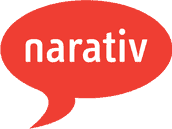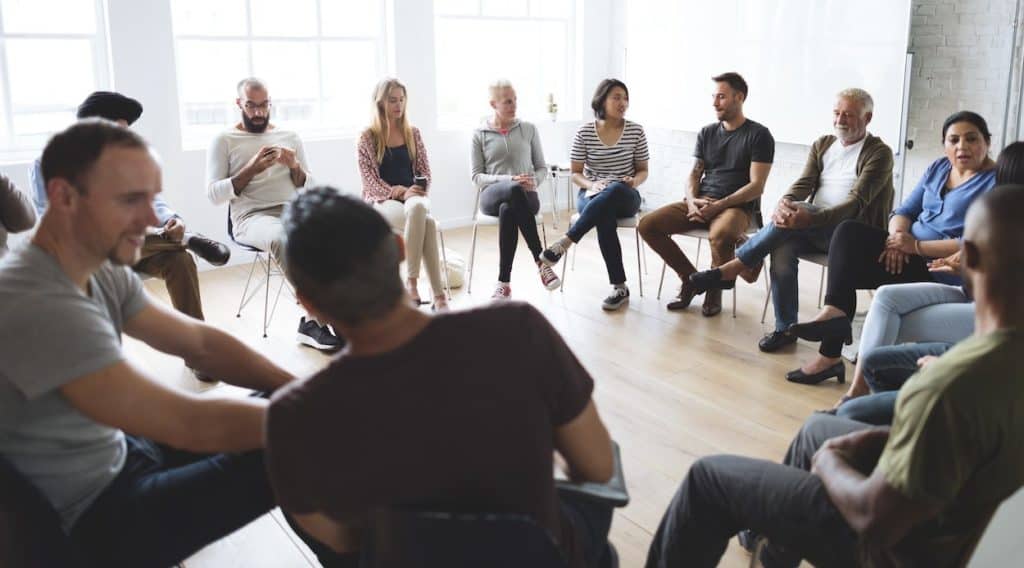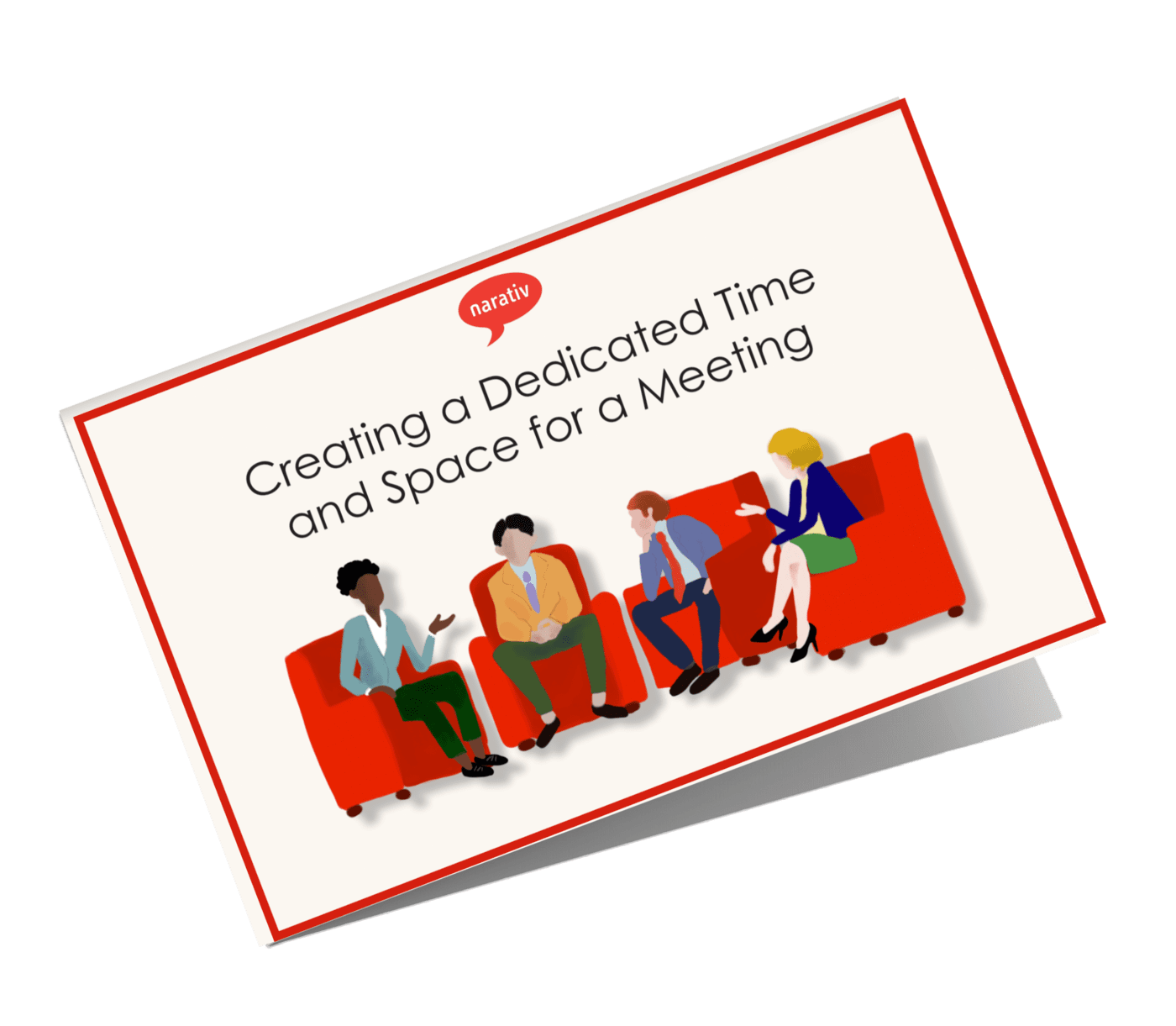Think of the most recent event you attended.
Chances are good you met some new people. Maybe you idly chatted with them about their professions, where they’re from, and maybe a little bit about their hobbies and interests. They were polite; you were polite.

Did the conversation ever get any deeper than that? When it doesn’t, it’s easy to forget what that person is all about.
Small talk is important. It breaks the ice and allows you to make small connections. However, if you never really get to know people in an intimate way, that lack of connection can become an obstacle to building the deep relationships that can dramatically impact a team (and in turn, a company) for the better.
Storytelling connects the head to the heart. It makes a person unforgettable, draws colleagues closer, and makes knowledge transfer so much easier. Here’s how you can break away from small talk and create real relationships that bring out the best in your teams.
The Grandparent Exercise
The anthropologist and filmmaker Barbara Myerhoff used the term “re-membering” as a way of ritually including deceased people in the current time and place. She coined the term after looking at life as if it were a club. People become members the moment they are born. When people die, their membership is revoked. However, when we tell a story about those who have passed on, it’s as if we were welcoming them back into the club, hence the term re-membering as distinct from remembering, without the hyphen.
Try the power of this exercise out for yourself by having colleagues tell a first-person story about a grandparent. This can break the ice and allow people to learn about each other in a substantial way, as most people have fond memories of their grandparents. The Grandparent Exercise is a powerful method to locate the personal story within a larger historical context.

There are 2 important roles in this exercise: the facilitator and the timekeeper. The facilitator explains and leads the exercise. The timekeeper times the speakers and also helps create the listening space for stories to emerge.
Here are the basic rules for the Grandparent Exercise:
- Introduce yourself as one of your 4 grandparents. Become that person and speak in the first-person: “My name is…”
- Tell us when you were born and if you are alive or have died. If you have died, please tell us when.
- If you didn’t really know your grandparents, that’s fine. If you have any memory, a photograph, or anything that someone said about them, draw on that image.
- The group will be giving and receiving the gift of listening to each person. Even when there are obstacles to listening, each member will bring their listening back to the speaker.
- You have 3 minutes to present yourself as your grandparent.
At the end of the story, the facilitator will thank the speaker. No other commentary. After each story, the facilitator asks the group, “How was your listening? Were there any obstacles?”
People may respond, “I was thinking about my story,” or “I was thinking about how little I know about my grandparents.”
The facilitator acknowledges these obstacles. They may say something like, “You are now aware you have an obstacle. Let it go and bring yourself back to be fully present for the next story.”
If someone starts to cry or becomes emotional, that’s fine. People may feel a need to comfort or put their arms around the speaker, but that does not allow the speaker to be with the emotion. Instead, encourage everyone to allow the speaker to keep going. The facilitator’s task is to make sure everyone in the group understands the rules and feels safe.
After the final story is told, the facilitator will thank everyone for giving the gift of listening to one another and congratulate participants for being present and bringing powerful listening to the circle.
What makes this storytelling exercise so powerful is that in asking people to tap into their heritage, they are liberated from having to talk about themselves. People can recall a memory of their grandparents, think about what impacted them, and tell a story without any prior preparation.
As they tell a story about their grandparent AS their grandparent, people who are listening lean in and give their full attention because their brains are fully engaged in storytelling.
The Grandparent Exercise in Action: The Cyprus Workshop
Let’s look at a case study where the Grandparent Exercise was used to powerful effect in bringing a global leadership team together.
One of Narativ’s co-founders, Murray Nossel, Ph.D., was running a workshop in Cyprus. The attendees were from all over the world, some of whom came from countries that were at war with each other.
The first speaker was an Iranian woman whose grandmother was sold into marriage at the age of 11, widowed at 16, sold again into marriage, and had nine children. Next was a woman from Belgium, whose grandmother scavenged from garbage cans during World War II, doing anything to feed her children. They both cried as they spoke.
Nossel told the speakers, “Your emotions are welcome here. There’s no need to fear or judge them. They are part of life, part of telling stories.”
Some of the attendees, including the senior vice president who had arranged the workshop, were uncomfortable and even upset with the emotional nature of the meeting. Some felt it was an invasion of their privacy, that it was too touchy-feely and too American.
However, after telling their own stories, many of the attendees were grateful for the opportunity to honor their ancestors and their heritage. One participant said, “It helped us to communicate in a better way.” To learn more about the grandparent exercise and this case study, check out the book Powered by Storytelling, by Murray Nossel PhD.
Creating Connections Despite Long Distances
In this day and age of remote work, it’s more important than ever to have engaged employees who feel like they’re a part of the team. This storytelling method can be transformative for long-distance colleagues, as Juliana Abakah experienced.
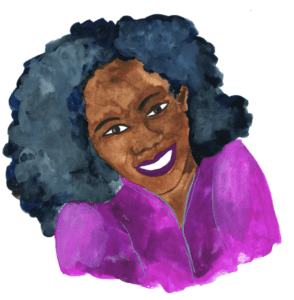
One of her colleagues told a story about her grandfather living in Nazi Germany. The experience was visceral for this colleague and caused her to cry.
“Now every time I see her, I remember the deep feelings she had, and I’ve connected very well with her since then,” Abakah said. “Before then we had been in the team together, but I didn’t know much about her. She’s based in Germany; the rest of us are here in New York. It’s different when you’re in different locations. But I feel like a lot of those boundaries have shifted since that experience.”
Having deep connections with coworkers can make knowledge transfer a more natural process. As you understand the person you work with, you understand how to communicate with them. Check out the client profile on Juliana and her experience.
Connecting To Your Heritage For Deeper Connections
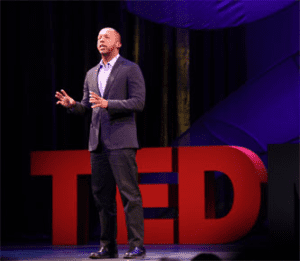
One day, his grandmother took him aside. She told him he was special and she believed he could do anything he aspired to do. She made him promise 3 things:
- To always love his mother.
- To always do the right thing, even when it’s the hard thing.
- And finally, to never drink alcohol.
This experience impacted him permanently. It’s a story he tells frequently to help others get to know him and what he stands for. He never drank alcohol, and he dedicated his life to challenging bias against the poor and minorities in the criminal justice system, especially children. Also, aren’t you dying to know why his grandmother told him never to drink alcohol? To find out, you can watch his TED Talk here
His interaction with his grandmother shaped his perception of his own identity of who he was. He brought in this small example to discuss a larger, overarching example on mass incarceration and its lasting effects on incarcerated Americans and their own perception of their identity and worth—which his audience was more open to listening to because of the connection he had created by opening with a story.
Build Deeper Connections and Better Communication
Using the Grandparent Exercise as a storytelling method for creating authentic team connections doesn’t just yield good communication. It is transformative in rallying people behind an organization and affects real change while also making it easier to ensure good knowledge transfer between your people.
If you’re looking for a way to build deep connections with your team and want to break away from small talk, we can help you with that. Check out our services to see what we offer or reach out to our CEO Jerome directly for a 15-minute consultation. Great stories are always remembered and bring people closer together.
